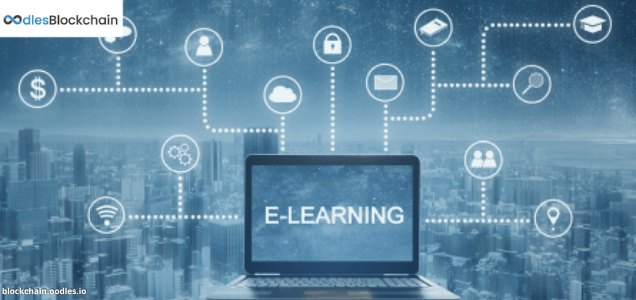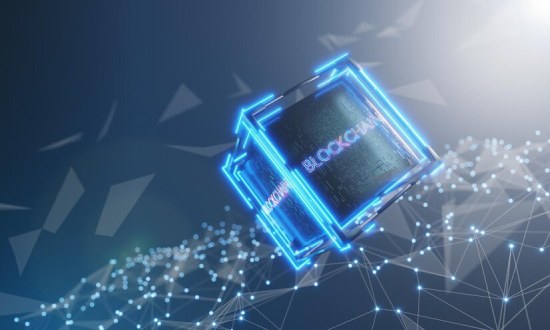-
If educational institutions need to ensure success in such a competitive world, they must take the first steps toward blockchain education development and innovation. The education sector is facing the same issues that have plagued it for years. Inefficient paper-based record-keeping systems, a lack of openness, weak student and teacher accountability, a lack of real incentive for students to learn and do well in class, and a lack of confidence in educational merits and academic degrees due to falsification are all examples of this.
How Blockchain Addresses Challenges Associated with the Education Industry
Efficiency across Back-Office Operations / Processes
While blockchain-based university diplomas are a significant step forward, a virtual transcript or record of all educational accomplishments can be an ultimate use case. A verifiable lifetime transcript on the blockchain will minimize CV fraud, streamline student transfers between colleges, reduce certificate verification overhead, and simplify traveling between states and countries. This form of initiative goes beyond record-keeping to streamline procedures.
Also, Read | Advancing the Education Sector with Blockchain Applications
Advanced Record-Keeping Solutions
One of the most exciting applications of blockchain technology in higher education is the digitization of academic records, including degrees, licenses, and diplomas. By converting these qualifications into digital form and placing them under the learner's control, blockchain eliminates the need for third-party validation, making the verification process more efficient.
Blockchain can also streamline the accreditation process for educational institutions, which is often time-consuming and complex in many countries. By utilizing blockchain, institutions can ensure the quality of education and validate teaching credentials more efficiently and transparently.
Moreover, blockchain's robust record-keeping capabilities make it an ideal solution for managing intellectual property (IP). It addresses challenges such as verifying the originality of concepts or innovations and facilitates the registration of IP properties, copyrights, and patents, providing a secure and immutable record of ownership and rights.
Read More | Data Privacy and Security with Hyperledger Fabric Blockchain
A New Digital Asset Market Creation
The payment process in higher education can involve various stakeholders, including recipients, parents, scholarship-granting organizations, financial institutions, governments, and educational institutions. In the future, cryptocurrencies, including custom cryptocurrencies, could be used as a form of student payment.
In 2014, King's College in New York City became the first accredited U.S. institution to accept cryptocurrencies as payment, eliminating credit card processing fees from students' bills. This pioneering move demonstrates how blockchain technology can be leveraged to create and exchange new digital assets within the higher education sector.
Additional Use Cases/Applications of Blockchain in Education
Smart Contracts Solutions for Accountability
Teachers can utilize blockchain smart contracts to create digital agreements with students regarding their assignments. These agreements specify all assignment details, including guidelines, conditions, due dates, and deadlines.
When a student completes the assignment according to the agreed terms, they can automatically gain access to the next part of the course or receive credit and a certificate of completion.
Furthermore, smart contract solutions can facilitate individualized learning within a traditional classroom setting, adding a motivational component often missing in conventional educational systems.
You may also like | Driving Advancements in the Education Industry with Blockchain
Incentivization Mechanism for Students and Teachers for Producing Better Outcomes
To empower students and inspire teachers to develop innovative learning materials and actively engage in education, cryptocurrency, and tokenized credits can serve as effective incentive systems. Smart contracts can be programmed to reward students with cryptocurrency for completing tasks, while teachers can further motivate students by offering extra credit to top performers.
Blockchain technology can also elevate modern education by fully integrating gamification features. Tokenized credits can be used to pay off student loans, purchase educational resources, and cover other educational expenses.
Moreover, rewarding students for completing a major and earning a university diploma with tokenized credits could significantly reduce dropout rates.
Also, Read | Incentive/ Rewards Program Management with Blockchain
Verifiable Lifetime Student Transcripts
Obtaining transcripts from educational institutions is often a cumbersome process that involves multiple parties and takes considerable time to verify credentials and compile academic records.
Blockchain technology can streamline this by providing students with an online digital transcript that is accessible anytime. This verifiable, lifelong student transcript would include all academic achievements, simplifying certificate authentication and making student transfers between schools much easier.
Providing students with a Comprehensive Accomplishment Portfolio
Students will create digital portfolios on an educational blockchain platform, storing all their academic accomplishments. These portfolios will include majors, minors, degrees, demonstrated proficiencies, certificates of completion, micro-certificates of achievement, additional acknowledgments and accolades, as well as assessment scores and attendance records.
When applying for jobs or seeking university admission, students can present their portfolios without needing repeated verification. This will result in a universal database of potential applicants, allowing businesses to search for and evaluate top-performing students easily.
Also, Read | Enhancing the Education System with Applications of Blockchain
A Real-World Use Case Example
Making a Disruptive Business Model
Currently, significant use cases of blockchain in higher education include record-keeping and performance optimization, which do not yet fully demonstrate the disruptive potential for developing new business models.
Woolf University aims to be the world’s first blockchain-powered, nonprofit, international university, leveraging blockchain and smart contracts to form the foundation of partnerships between learners and educators. Dubbed the Airbnb of degree courses, it was founded by a group of academics from Oxford and Cambridge.
This innovative educational platform utilizes blockchain smart contracts to automate administrative tasks, enhance security for faculty and students, reduce administrative overhead costs, and lower tuition fees while increasing faculty remuneration. Instructors can choose to receive payment in Woolf tokens or their preferred currency. The university applied for EU accreditation to expand internationally in 2019.
Also, Read | Developing Education-to-Employment Verification Solution with Hyperledger Fabric
Conclusion
In conclusion, blockchain technology holds immense promise for revolutionizing various aspects of higher education. From digitizing academic records to streamlining administrative tasks and incentivizing student and faculty engagement, its potential applications are vast. The emergence of initiatives like Woolf University demonstrates the tangible benefits of integrating blockchain into educational systems, offering greater efficiency, transparency, and accessibility. As the adoption of blockchain in higher education continues to evolve, it has the potential to reshape traditional models and pave the way for more innovative and inclusive learning environments.
Connect with our blockchain developers for more information about how to integrate blockchain into education and simplify the experience innovatively.

Our Offices
INDIA
Emaar Digital Greens, Sector 61,
Gurugram, Haryana
122011.
Welldone Tech Park,
Sector 48, Sohna road,
Gurugram, Haryana
122018.














